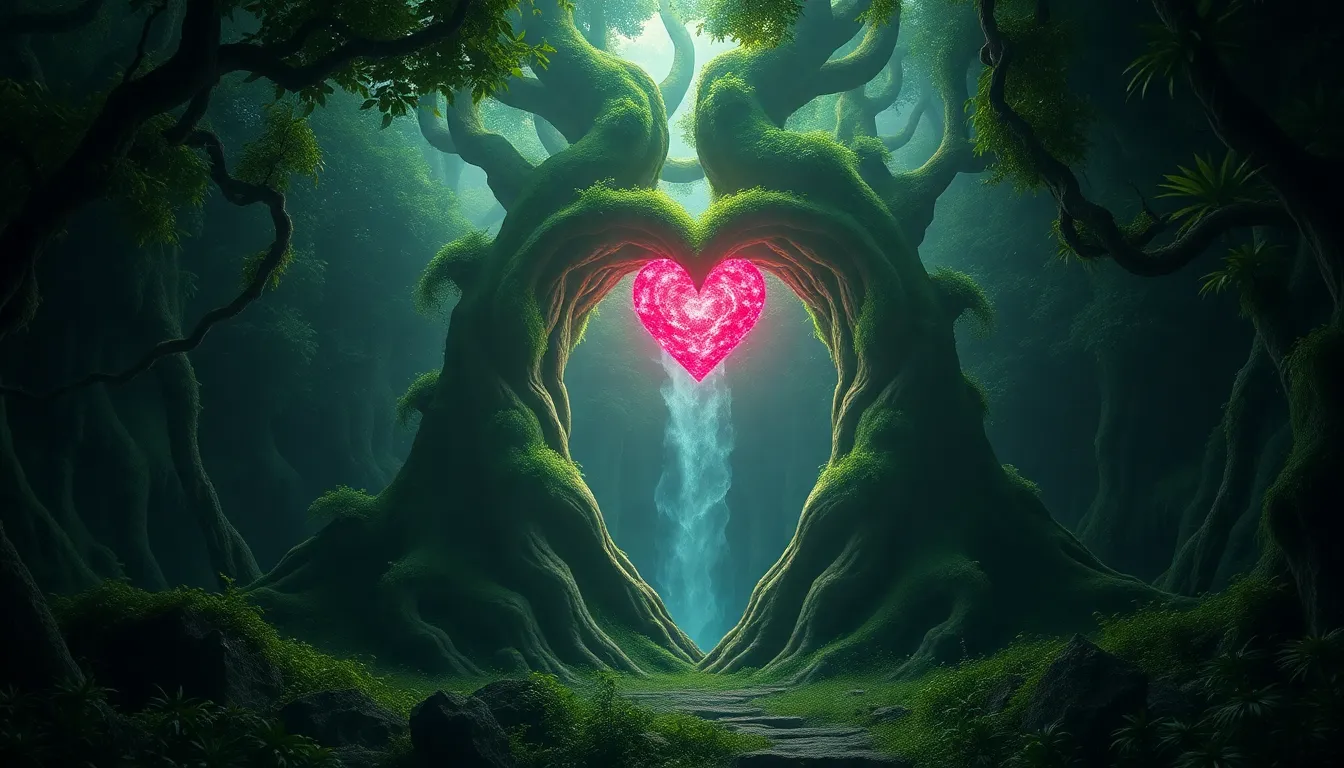The Heart of Te Fiti: Nature’s Mythical Connection
Introduction to Te Fiti: A Mythical Overview
Te Fiti is a prominent figure in Polynesian mythology, revered as the goddess of creation and nature. She embodies the essence of life and the nurturing aspects of the earth. In the mythology, Te Fiti’s heart is a symbol of her creative power, representing the vital connection between humanity and the natural world. Her character reflects the deep reverence that Polynesian cultures have for nature and the belief that it is a living entity, deserving respect and care.
The Heart of Te Fiti: Symbolism and Meaning
The Heart of Te Fiti is not just a magical object; it is a powerful symbol of life, growth, and creation. It represents the essence of balance in nature, showcasing how all elements of the ecosystem are interconnected. The Heart signifies:
- Life: It is the source from which all living things spring.
- Balance: The Heart embodies the equilibrium necessary for nature to thrive.
- Connection: It symbolizes the relationship between humanity and the natural world.
In essence, the Heart of Te Fiti serves as a reminder of the responsibility humans have in nurturing and protecting the environment.
Cultural Context: The Role of Nature in Polynesian Mythology
Polynesian belief systems are deeply rooted in the connection to nature. The land and sea are not merely resources but are considered sacred entities imbued with spiritual significance. Many Polynesian stories illustrate the symbiotic relationship between people and the natural world, emphasizing respect and stewardship. Key elements include:
- Land: Seen as a provider, the land is revered for its bounty and beauty.
- Sea: The ocean is viewed as a life source, teeming with fish and resources vital for survival.
- Spirituality: Nature is often personified, and deities are believed to inhabit various aspects of the environment.
This cultural context enhances the understanding of Te Fiti as a goddess who represents not only creation but also the intrinsic value of nature in Polynesian life.
The Journey of Moana: A Quest for Restoration
Disney’s “Moana” beautifully intertwines the narrative of Te Fiti with the story of its titular character. Moana embarks on a journey across the ocean to restore the Heart of Te Fiti, which has been stolen, leading to ecological imbalance. The plot serves as a metaphor for environmental stewardship, showcasing Moana’s growth and resilience as she learns the importance of her identity and the responsibility towards her island and its resources. Through her journey, viewers witness:
- Discovery: Moana discovers her calling as a wayfinder.
- Respect for Nature: She learns to listen to the ocean and understand its rhythms.
- Community: The importance of working together for the common good of the environment.
Ultimately, Moana’s journey highlights the need for humans to reconnect with nature and take action to protect it.
Nature’s Fragility: Lessons from the Heart of Te Fiti
The story of Te Fiti carries significant ecological themes, illustrating the fragility of nature and the consequences of neglecting it. As the Heart is removed, the balance in nature deteriorates, leading to environmental devastation. Some key lessons include:
- Interdependence: All elements of the ecosystem rely on each other for survival.
- Consequence of Actions: Human actions can lead to destruction and imbalance.
- Restoration: Healing the environment requires effort and commitment.
These lessons encourage audiences to reflect on their relationship with nature and the impact of their choices.
The Rebirth of Te Fiti: Restoration and Renewal
The rebirth of Te Fiti at the film’s conclusion symbolizes renewal and restoration in nature. It serves as a powerful metaphor for ecological recovery and the potential for healing. In real life, many initiatives echo this narrative, focusing on restoring damaged ecosystems. Examples include:
- Wetland Restoration: Projects aimed at restoring natural wetlands to support biodiversity.
- Reforestation: Efforts to plant trees in deforested areas, restoring habitats.
- Marine Conservation: Initiatives to protect coral reefs and marine life.
These case studies illustrate that, like Te Fiti, nature can be healed with dedication and care.
The Heart of Te Fiti and Modern Environmental Movements
The themes of the Heart of Te Fiti resonate deeply with contemporary environmental activism. Many organizations strive to embody the spirit of Te Fiti by promoting sustainability and conservation. Examples include:
- Greenpeace: Advocating for the protection of the planet’s biodiversity.
- The Nature Conservancy: Working to conserve the lands and waters on which all life depends.
- World Wildlife Fund (WWF): Focused on preserving the world’s biological diversity.
These movements reflect the narrative’s message, encouraging individuals to take action in their local environments.
The Influence of Te Fiti on Global Perceptions of Nature
The story of Te Fiti has shaped global perceptions of nature and conservation, emphasizing the importance of storytelling in environmental awareness. Through the lens of Moana, audiences around the world have gained insights into:
- Environmental Responsibility: The need for individuals to care for the planet.
- Cultural Respect: Understanding and valuing indigenous narratives around nature.
- Collective Action: The power of communities coming together to protect their environments.
This influence underscores the importance of narrative in fostering a deep-seated respect for nature.
Interpreting Te Fiti’s Heart: Perspectives from Native Cultures
Engaging with Polynesian culture offers a richer understanding of Te Fiti. Indigenous voices emphasize the significance of the character as a representation of the land and sea, highlighting the sacredness of nature. Respectful engagement with these perspectives reveals:
- Traditional Knowledge: Indigenous practices that promote sustainability.
- Spiritual Connections: The belief that nature is alive and connected to the divine.
- Community Wisdom: The importance of passing down knowledge through generations.
These insights remind us to honor the native cultures that have long understood the importance of harmony with nature.
Conclusion: Embracing the Heart of Te Fiti in Our Lives
In conclusion, the Heart of Te Fiti serves as a profound reminder of our connection to nature and the responsibility that comes with it. As we reflect on the lessons from Te Fiti’s story, it is crucial to embrace our role as stewards of the environment. We can nurture our relationship with nature by:
- Practicing Sustainability: Making conscious choices to minimize our ecological footprint.
- Supporting Conservation Efforts: Engaging with organizations that work towards environmental protection.
- Educating Others: Sharing knowledge about the importance of caring for our planet.
Let us take inspiration from the Heart of Te Fiti and commit to protecting our natural world, ensuring a vibrant and balanced ecosystem for future generations.



